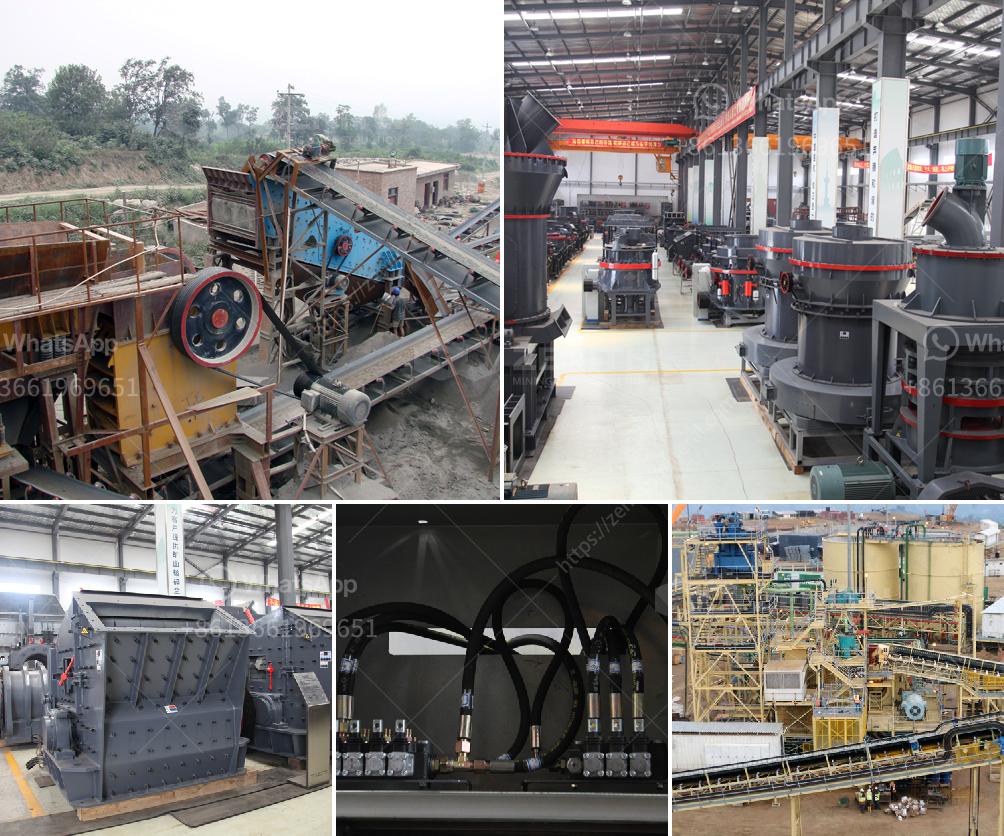In mineral processing, grinding mills and crushers are both used to reduce the size of raw materials, but they serve different roles and operate based on different principles.
Crushers:
-
Purpose: Crushers are typically used for the initial size reduction of mined ore. They are designed to handle large chunks of material and reduce them to a size suitable for further processing or transportation.
-
Types: Common types of crushers include jaw crushers, gyratory crushers, cone crushers, and impact crushers. Each type operates differently:
- Jaw Crushers: Use compressive force for breaking material. They consist of a fixed plate and a moving plate that compress the material between them.
- Gyratory Crushers: Similar to jaw crushers, but with a gyrating spindle that crushes material against a fixed outer wall.
- Cone Crushers: Function similarly to gyratory crushers but are more suitable for secondary or tertiary crushing.
- Impact Crushers: Use impact force to break materials. Material is fed into a chamber containing a high-speed rotor with hammers.
-
Output Size: The output size is generally larger than that produced by grinding mills, which makes crushers suitable for further processing through grinding.
Grinding Mills:
-
Purpose: Grinding mills are used to further reduce the size of already crushed ore to fine particles, preparing the material for downstream processes such as concentration, flotation, or leaching.
-
Types: Common types of grinding mills include ball mills, rod mills, and SAG (semi-autogenous grinding) mills. These operate differently:
- Ball Mills: Use balls as grinding media inside a rotating cylinder. The balls tumble and grind the material.
- Rod Mills: Similar to ball mills, but use long rods for grinding media.
- SAG Mills: Combine the operations of crushing and grinding. They use both large rocks and grinding balls as grinding media.
-
Output Size: Grinding mills produce much finer output compared to crushers. The goal is to achieve a size that maximizes the surface area of the material for subsequent processes.
Key Differences:
- Function: Crushers are for heavy-duty size reduction, while grinding mills reduce material to a finely divided state.
- Application: Crushers are for primary (and secondary) stages, and grinding mills are typically employed at later stages of processing.
- Output Size: Crushers produce larger chunks; mills yield smaller, more uniform particles.
- Operation Mechanism: Crushers use compressive, impact, or shear forces; mills often use grinding media to impart energy to the ore.
Understanding these distinctions helps in designing and optimizing the entire mineral processing circuit for efficiency.

